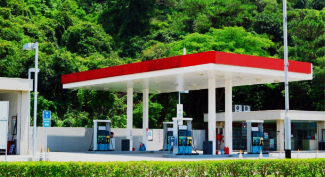Springing Gas Prices
While the first few months of this year ushered in daily national gas price averages that were, at times, as much as 35-cents cheaper than a year ago, pump price since the middle of March have been mostly similar to pump prices this time last year. Today’s national gas price average is four-cents more expensive than a year ago.
“Historically, early spring triggers an increase in pump prices due to an increase in demand as Americans put the winter blues behind them and drive more. Another factor pumping up the price is the switchover to summer-blend gasoline, which is more expensive for refiners to produce,” added Casselano.
The difference between summer- and winter-blend gasoline involves the Reid Vapor Pressure (RVP) of the fuel. RVP is a measure of how easily the fuel evaporates at a given temperature. The more volatile a gasoline (higher RVP), the easier it evaporates. Summer-blend gasoline has a lower RVP to prevent excessive evaporation when outside temperatures rise. Reducing the volatility of summer gas decreases emissions that can contribute to unhealthy ozone and smog levels. A lower RVP also helps prevent drivability problems, especially in older vehicles. Summer-blend is more expensive to produce and that cost is passed on to the consumer each spring.
Oil Dynamics
Motorists benefitted this winter from lower crude prices, which comprises approximately 50 percent of the prices paid at the pump. Crude prices ranged between $48 and $56 this winter, while winter 2018 saw consistent prices between $60 and $65. This difference helped to keep pump prices mostly cheaper this winter, but crude prices are likely poised to increase this spring possibly back to $65, which will propel gas prices higher as gasoline demand increases across the country.
Moreover, moving into spring, crude prices will likely increase as the Organization of the Petroleum Exporting Countries (OPEC) continues to implement its agreement with other global crude producers to cut production by 1.2 million b/d, which remains in effect through June. OPEC has announced that it will not meet in April to discuss the pact; instead, it will meet on June 25 and 26 and may announce a decision to end or extend its agreement at that time. OPEC and its partners will likely look toward global pricing trends around the time the cuts are set to expire as well as global crude demand forecasts, and how well members of the reduction pact have adhered to the production cuts to determine if it should extend its pact beyond June. If it does and crude prices rise dramatically, American motorists could see pump prices spike later in the summer.
Additionally, U.S.-imposed sanctions meant to curtail crude exports from Iran and Venezuela will likely tighten global supply and help crude prices inch up this spring. The exact price impact will be determined by how stringently the U.S. enforces the sanctions. Some market observers believe the U.S., which is now the world’s leading crude producer, could help meet global demand because of its newfound export prowess. However, growth in domestic demand for crude, particularly during the high demand driving season this summer, may limit just how much the U.S. is able to contribute to the global crude market.
Summer Look Ahead
AAA expects summer 2019 gas prices to be on par with prices during summer 2018, with May seeing the highest prices of the year. Heading into summer, a variety of factors, including U.S. supply-demand levels, U.S. production and crude prices will help better shape the summer forecast.
Visit GasPrices.AAA.com for national and state gas price averages and trends.
AAA provides more than 59 million members with automotive, travel, insurance and financial services through its federation of 34 motor clubs and nearly 1,100 branch offices across North America. Since 1902, the not-for-profit, fully tax-paying AAA has been a leader and advocate for safe mobility. Drivers can request roadside assistance, identify nearby gas prices, locate discounts, book a hotel or map a route via the AAA Mobile app. To join, visit AAA.com.

























